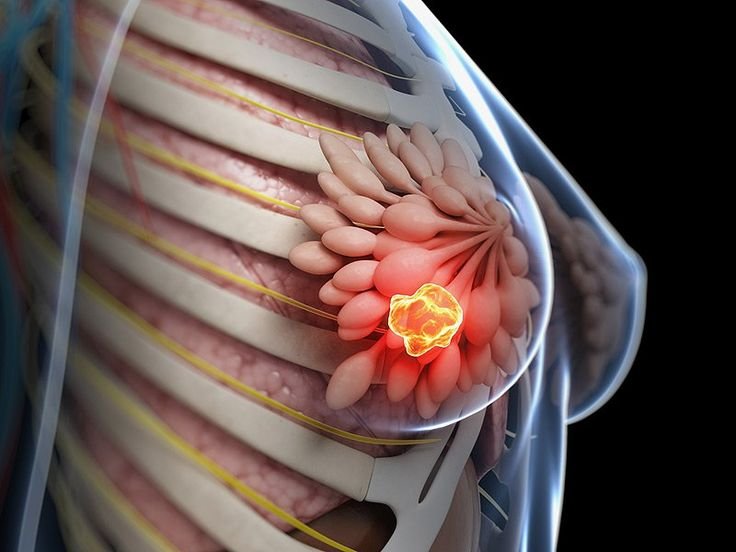
Introduction
Overview of Breast Cancer Therapy
Breast cancer therapy encompasses a range of treatments aimed at eliminating cancerous cells from the breast tissue. This usually involves a combination of surgery, chemotherapy, radiation therapy, targeted therapy, and hormone therapy. The specific treatment plan varies depending on the type and stage of breast cancer diagnosed. Surgery involves removing the tumor and possibly nearby lymph nodes, while chemotherapy uses drugs to kill cancer cells. Radiation therapy targets cancer cells to stop their growth and division. Targeted therapy focuses on specific molecules involved in cancer growth, while hormone therapy blocks hormones that certain types of breast cancer need to grow. The goal of therapy is to eradicate cancer cells, prevent recurrence, and improve overall survival rates.
Importance of Early Detection
Early detection of breast cancer significantly increases treatment success rates and improves outcomes. Regular screenings, such as mammograms and self-examinations, can help detect cancer in its early stages when it’s most treatable. When breast cancer is diagnosed early, before it has spread, the chances of successful treatment are higher. Early detection also allows for less aggressive treatment options, reducing the physical and emotional impact on patients. By emphasizing the importance of early detection through education and screening programs, more women can access timely and effective treatment, leading to better prognosis and increased survival rates.
Surgical Treatments
Lumpectomy and Mastectomy
When it comes to surgical treatments for breast cancer, two common procedures are lumpectomy and mastectomy. A lumpectomy involves removing the tumor and a small portion of surrounding healthy tissue, aiming to preserve as much of the breast as possible. On the other hand, a mastectomy involves the complete removal of the breast tissue. The choice between the two depends on factors like the size and stage of the cancer, as well as the patient’s preferences and overall health. Both procedures may be followed by radiation therapy to target any remaining cancer cells in the breast area.
Lymph Node Removal
In some cases, breast cancer may spread to the nearby lymph nodes. Lymph node removal is a surgical procedure to assess whether cancer has spread beyond the breast. During this procedure, one or more lymph nodes are removed and examined for cancer cells. This helps determine the stage of cancer and the need for further treatment. Identifying if cancer has spread to the lymph nodes is crucial for planning the appropriate course of treatment and improving outcomes for breast cancer patients.
Radiation Therapy
When it comes to treating breast cancer, radiation therapy plays a crucial role in destroying cancer cells and reducing the risk of recurrence.
External Beam Radiation
External beam radiation is a common form of radiation therapy used after lumpectomy or mastectomy. It involves directing high-energy X-rays at the affected breast area to kill any remaining cancer cells. This targeted approach helps minimize damage to surrounding healthy tissue.
Brachytherapy
Brachytherapy is another type of radiation therapy where radioactive seeds or pellets are placed directly into the breast tissue near the tumor site. This allows for a more precise delivery of radiation to the affected area while reducing exposure to healthy tissues. Brachytherapy is typically used as a shorter treatment option compared to external beam radiation, with fewer side effects. By understanding the different types of radiation therapy available for breast cancer treatment, patients and healthcare providers can work together to develop a personalized treatment plan that offers the best chance of success. Through advancements in radiation technology and treatment techniques, the outlook for breast cancer patients undergoing radiation therapy continues to improve.
Chemotherapy
Chemotherapy is another vital component in the treatment of breast cancer. Various types of chemotherapy drugs are used to target and destroy cancer cells throughout the body, both before and after surgery. These drugs work by interfering with the cancer cells’ ability to grow and divide, ultimately leading to their death. The specific drugs chosen and the duration of treatment will depend on factors such as the stage of cancer, overall health of the patient, and treatment goals.
Types of Chemotherapy Drugs
Despite its effectiveness, chemotherapy can also cause side effects due to its impact on both cancerous and healthy cells. Common side effects include nausea, hair loss, fatigue, and increased risk of infections. However, advancements in medical science have led to improved management strategies for these side effects. Healthcare providers can offer supportive care, medications, and other interventions to help patients cope with the challenges of chemotherapy.
Side Effects and Management
It is essential for patients undergoing chemotherapy to work closely with their healthcare team to monitor and manage any side effects effectively. By understanding the different types of chemotherapy drugs available and how to mitigate potential side effects, patients can navigate their treatment journey with confidence and resilience.
Also Read: Effective Cancer of Breast Treatment Options | Expert Advice
Hormone Therapy
When it comes to breast cancer treatment, hormone therapy plays a crucial role alongside chemotherapy.
Targeted Therapy
Targeted therapy and hormone receptor-positive breast cancer treatments are vital in addressing specific types of breast cancer. Targeted therapy focuses on attacking cancer cells while minimizing damage to healthy cells, leading to more effective and precise treatment outcomes. On the other hand, hormone receptor-positive breast cancer refers to cancer cells that have specific receptors for hormones like estrogen or progesterone. Hormone therapy aims to block these hormones to prevent cancer cell growth or kill cancer cells.
Hormone Receptor-Positive Breast Cancer
Working in conjunction with chemotherapy, hormone therapy provides a comprehensive approach to combating breast cancer. Patients should consult with their healthcare team to determine the most suitable treatment plan based on their individual circumstances. By understanding the nuances of targeted therapy and hormone receptor-positive breast cancer treatments, patients can actively participate in their treatment journey, improving their chances of successful outcomes and better quality of life post-treatment.
